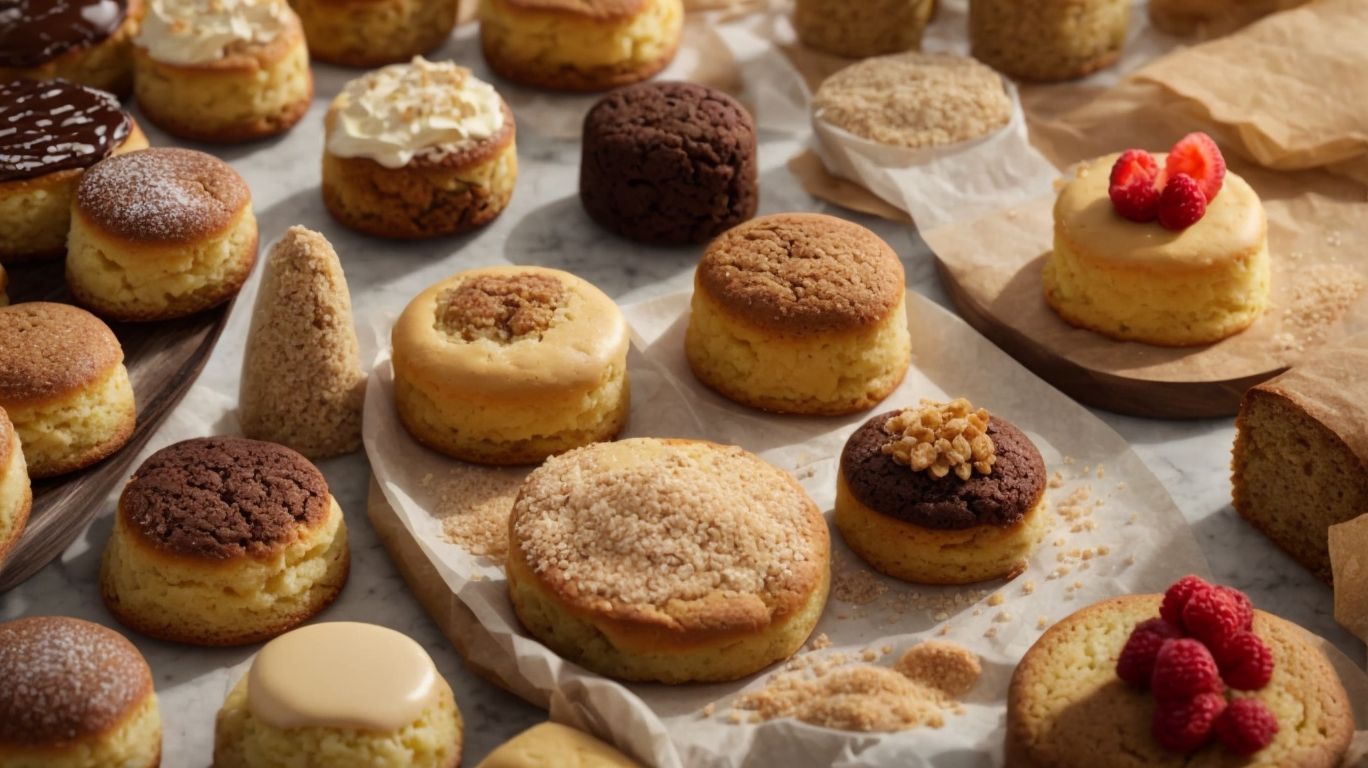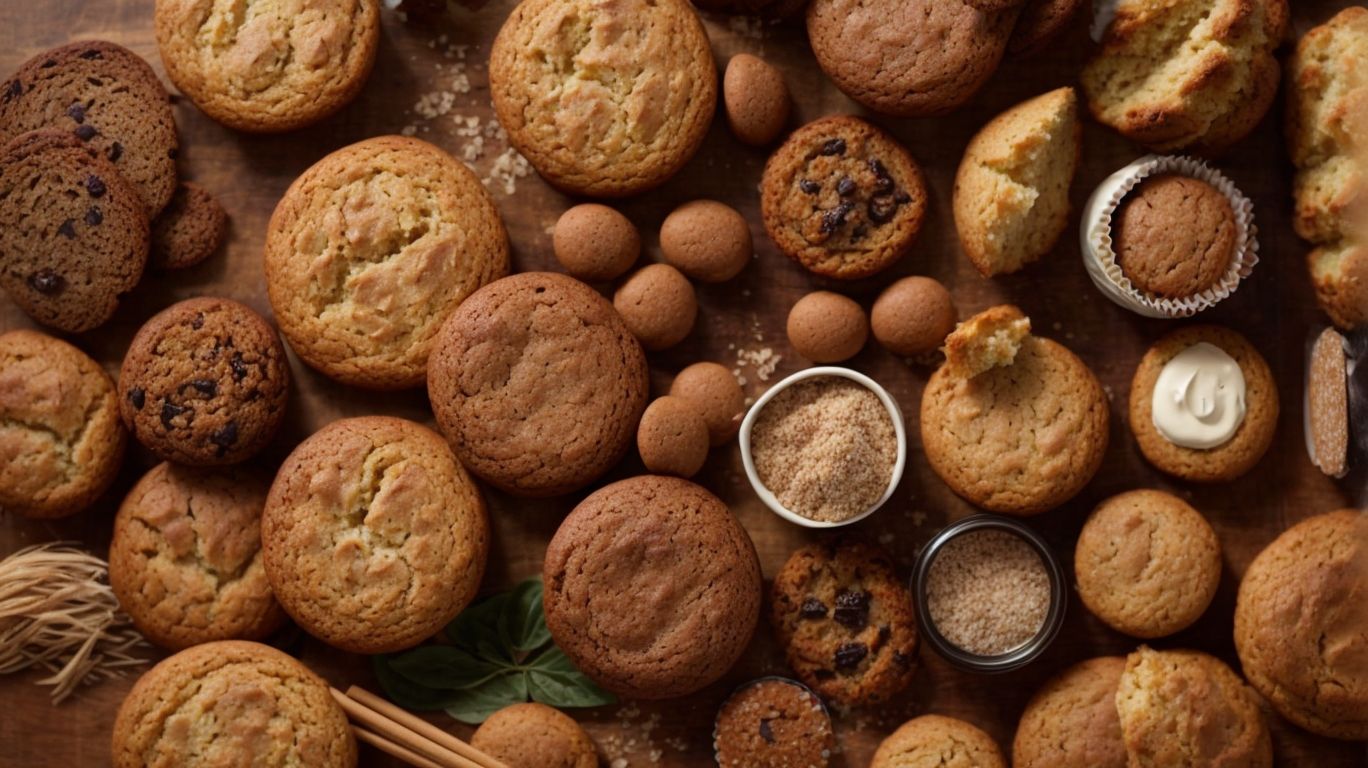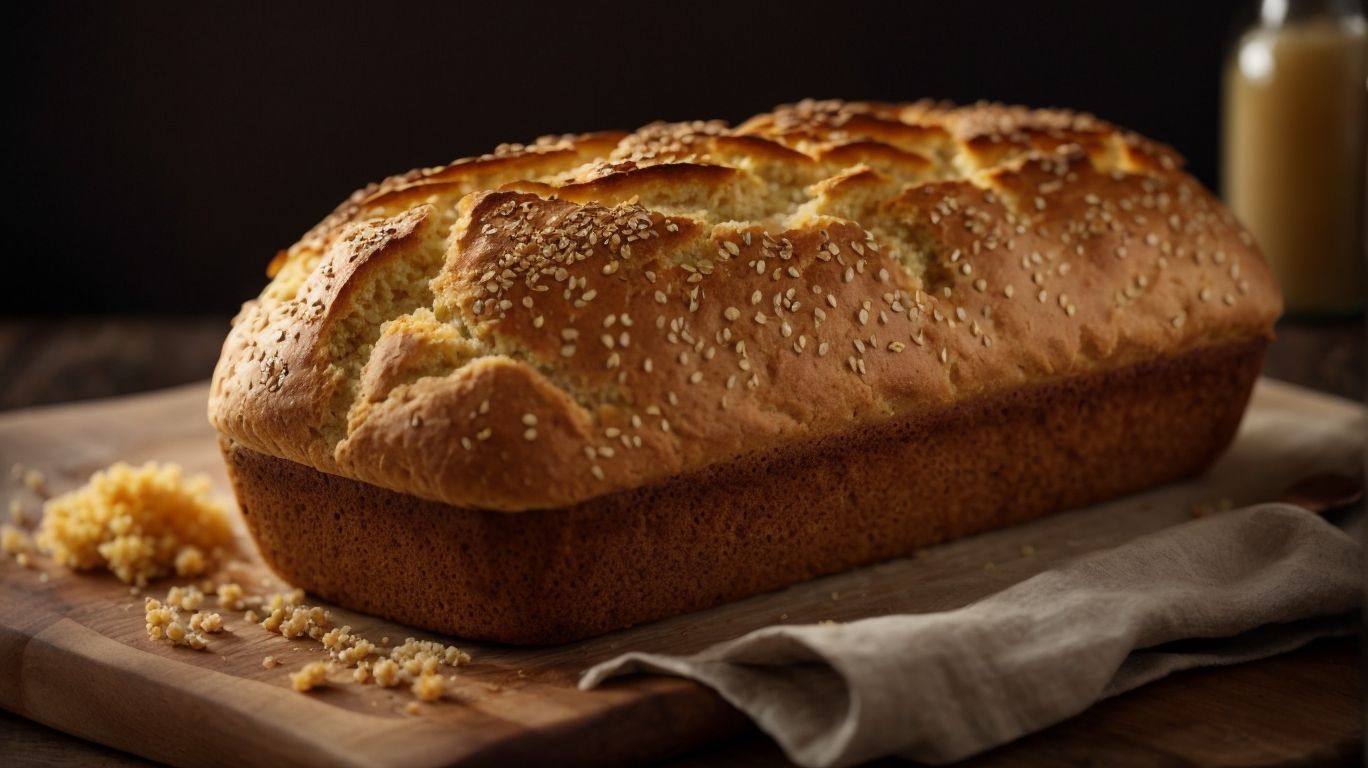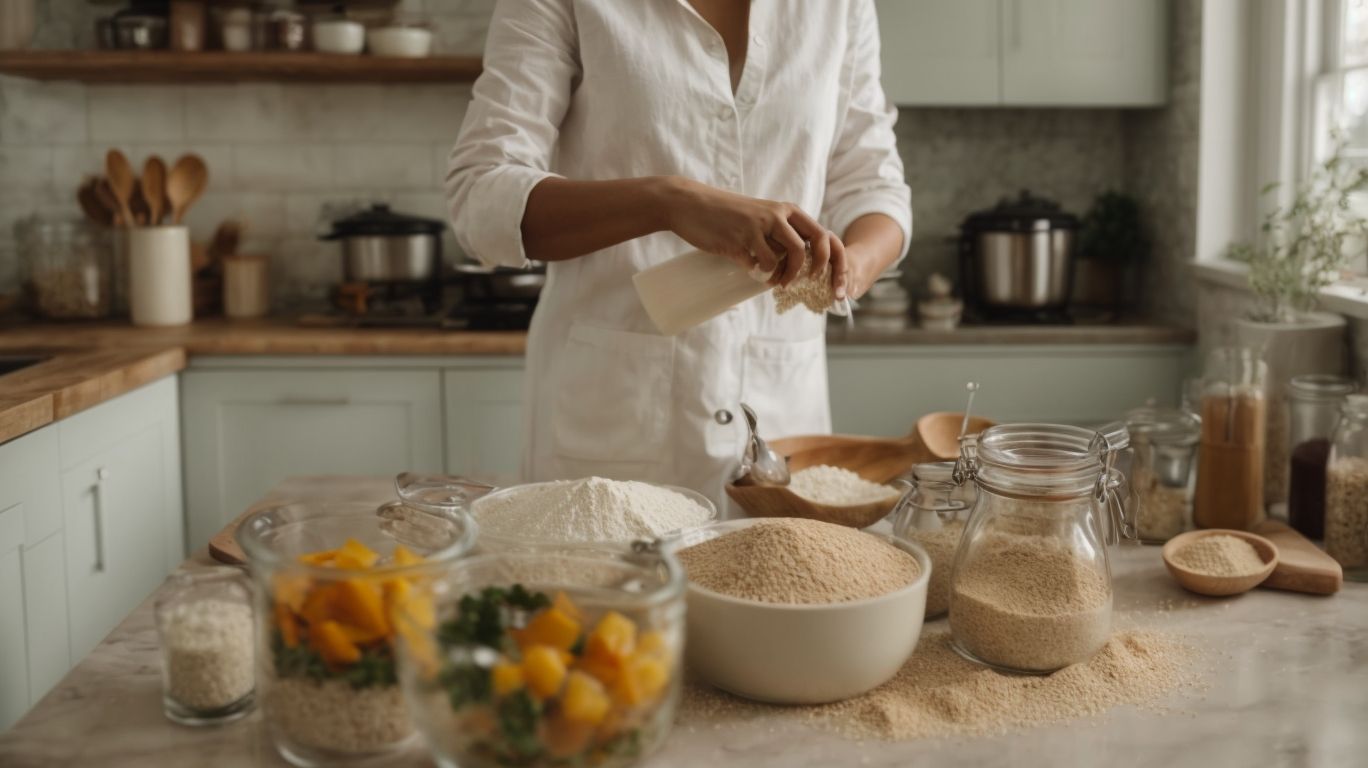How to Bake With Quinoa Flour?
Have you ever heard of quinoa flour? If you’re looking to enhance your baking skills or simply try something new in the kitchen, quinoa flour might just be the ingredient you need.
From its gluten-free benefits to its unique flavor profile, there are plenty of reasons to incorporate quinoa flour into your baking recipes.
Discover why quinoa flour is a great option for baking, learn how to substitute it in your favorite recipes, explore the types of baked goods you can make with it, and find some delicious quinoa flour recipes to try. Let’s get baking with quinoa flour!
Key Takeaways:
What is Quinoa Flour?
Quinoa flour, a gluten-free alternative, is a nutrient-rich flour made from ground quinoa seeds known for its high protein and fiber content.
This versatile ingredient has gained popularity in the baking world due to its various health benefits and unique flavor profile. Quinoa flour offers a light and airy texture, making it ideal for creating gluten-free baked goods like cakes, muffins, and cookies. Its high protein content makes it a great option for those looking to boost their protein intake without consuming animal products.
Why Use Quinoa Flour in Baking?
Using quinoa flour in baking offers a gluten-free option that is rich in protein and imparts a unique flavor profile to baked goods.
When using quinoa flour instead of traditional wheat flour, you not only cater to individuals with gluten sensitivities but also boost the nutritional value of your baked treats.
One of the standout benefits of quinoa flour is its impressive protein content, making it an excellent alternative for those looking to add more protein to their diet.
The distinctive nutty and slightly sweet taste of quinoa flour adds a pleasant depth of flavor to muffins, bread, and cookies, elevating the overall taste experience.
Gluten-Free Option
Quinoa flour serves as an excellent gluten-free option for individuals with dietary restrictions or preferences, ensuring that baked goods can be enjoyed without gluten-related concerns.
This nutritious alternative to traditional wheat flour has gained popularity in recent years, not only for its health benefits but also for its versatility in baking. Gluten-free diets have become increasingly prevalent, making quinoa flour a staple ingredient in many households looking to avoid gluten-containing products. Bakers with gluten sensitivities praise quinoa flour for its ability to create delicious treats without sacrificing taste or texture. Plus, quinoa flour is rich in fiber, protein, and essential nutrients, making it a nutritious choice for those seeking a well-rounded baking option.
Nutritional Benefits
Quinoa flour is a nutritional powerhouse, offering high protein and fiber content that contributes to a healthier baked goods option.
“
Protein plays a vital role in building, repairing, and maintaining body tissues, while fiber aids in digestion and promotes a feeling of fullness. By using quinoa flour in your baking recipes, you can boost the protein intake of your treats and benefit from the enhanced fiber content. Quinoa flour is gluten-free, making it suitable for those with gluten sensitivities.
Unique Flavor Profile
Quinoa flour adds a unique and nutty flavor profile to baked goods, elevating the taste with its distinct characteristics.
This gluten-free alternative to traditional wheat flour brings a subtle earthiness and slight sweetness, making it a versatile ingredient in various recipes. When used in baking, quinoa flour lends a delicate texture and a wholesome depth of flavor, complementing both sweet and savory dishes. Its rich nutritional value, high protein content, and fiber make it a popular choice among health-conscious bakers looking to boost the nutritional profile of their creations. With a light and airy texture, quinoa flour can add a delightful crunchiness or softness to cookies, muffins, or cakes, imparting a pleasant nutty undertone.
How to Substitute Quinoa Flour in Baking?
When substituting quinoa flour in baking, maintain a 1:1 ratio for all-purpose flour, adjust liquid content to balance the texture, and consider adding binding agents for better structure.
Since quinoa flour is gluten-free, it behaves differently than traditional wheat flours. To improve the texture, consider combining it with a starch like tapioca or potato flour. This can help mimic the binding characteristics of gluten, resulting in a more cohesive final product.
Incorporating xanthan gum or guar gum can contribute to better structure by holding ingredients together and preventing crumbliness. These gums are commonly used in gluten-free baking to enhance elasticity and binding, especially when the original recipe relies on gluten for these properties.
1:1 Ratio for All-Purpose Flour
For an easy substitution, replace all-purpose flour with quinoa flour in a 1:1 ratio to maintain the intended texture and consistency of the baked goods.
When swapping out flour in a recipe, it’s crucial to consider the impact on the final product. The 1:1 ratio ensures that the structure and crumb of your baked goods remain just right. This balance helps retain the moisture content and binding properties necessary for a successful bake.
Adjust Liquid Content
Adjusting the liquid content when using quinoa flour is crucial to balance the texture and prevent the baked goods from becoming too dry or dense.
Quinoa flour has a unique composition that requires some special attention in baking. One of the main challenges bakers face is its tendency to absorb moisture quickly, leading to a dry end product. By adjusting the amount of liquid in your recipe, you can achieve a smoother consistency and a more tender crumb.
Too much liquid can result in a soggy texture, while too little can make the final product crumbly. Finding the right balance is key to creating delicious treats with quinoa flour. Experimentation and practice are essential to mastering this delicate balance for baking success.
Add Binding Agents
Enhance the structure of baked goods made with quinoa flour by incorporating binding agents like eggs, flaxseeds, or xanthan gum to improve consistency and prevent crumbliness.
When baking with quinoa flour, the use of binding agents plays a crucial role in holding your creations together and achieving that perfect texture. Choosing the right binding agent is essential to ensure your baked goods turn out moist and cohesive. While eggs are a classic choice, vegans often opt for flaxseeds soaked in water to create a gel-like consistency that mimics eggs. Xanthan gum, a plant-based alternative, is ideal for gluten-free recipes, providing elasticity and structure to your bakes.
What Types of Baked Goods Can Be Made with Quinoa Flour?

Credits: Poormet.Com – Juan Nguyen
Quinoa flour offers a versatile option for creating a wide range of baked goods including breads, muffins, cookies, and pancakes, adding a nutritious twist to traditional recipes.
Regarding bread, quinoa flour can bring a unique flavor and texture to your loaves, making them moist and slightly nutty.
For muffins, the flour’s lightness and nuttiness work well with fruits like berries or bananas, creating a delightful snack or breakfast treat.
Cookies made with quinoa flour can have a more delicate crumb and a richer taste, perfect for pairing with a glass of milk or a cup of tea.
And pancakes made with this flour offer a gluten-free alternative that is both fluffy and satisfying.
Breads and Muffins
Quinoa flour can be used to create delicious and nutritious bread and muffin recipes, providing a gluten-free alternative with added protein and fiber benefits.
For those looking to incorporate more nutrient-rich ingredients into their baking routine, quinoa flour offers a fantastic option. Not only does it cater to individuals with gluten sensitivities or celiac disease, but it also packs a powerful nutritional punch. This versatile flour is high in protein, containing all the essential amino acids, making it a great choice for those looking to increase their protein intake. Quinoa flour is a good source of dietary fiber, promoting better digestion and a feeling of fullness.
Cookies and Bars
Experiment with quinoa flour in cookie and bar recipes to introduce unique flavors and textures, enhancing the nutritional profile of traditional treats.
Quinoa flour adds a nutty and slightly earthy flavor that complements the sweetness of cookies and bars, creating a delightful balance of tastes. It boosts the protein, fiber, and micronutrient content, making your baked goods more wholesome and satisfying. It also provides a gluten-free alternative for those with dietary restrictions or preferences.
Pancakes and Waffles
Revamp your breakfast routine by using quinoa flour in pancake and waffle recipes, creating wholesome and hearty morning delights with added protein and fiber content.
Quinoa flour, derived from the nutrient-packed ancient grain quinoa, offers a gluten-free alternative to traditional flour options for those seeking a balanced breakfast.
Not only does it impart a nutty flavor to your breakfast treats, but it also boosts the nutritional value of your morning meal.
Be it fluffy pancakes or crispy waffles, incorporating quinoa flour introduces a plant-based protein source and a significant dose of dietary fiber, making your breakfast more satisfying and energizing to kickstart your day.
Tips for Baking with Quinoa Flour
Enhance your baking experience with quinoa flour by sifting the flour, using room temperature ingredients, and incorporating flavor enhancers for delectable results.
When sifting quinoa flour, you aerate it, resulting in a lighter texture in your baked goods. Room temperature ingredients blend more easily, ensuring a uniform mixture and better rise.
Experiment with vanilla extract, cinnamon, or citrus zest as flavor enhancers to elevate the taste profile of your creations.
Sift the Flour
Ahead of using quinoa flour in your recipes, ensure to sift the flour to remove any lumps and aerate it for a lighter texture in your baked goods.
When baking with quinoa flour, sifting plays a crucial role in achieving a smooth and consistent texture in your final product. Sifting helps break down clumps that may have formed during storage, ensuring a uniform distribution of the flour particles in your batter. This process not only improves the overall texture of your baked goods but also helps them rise more evenly. Airing out the flour through sifting allows it to mix more easily with other ingredients, resulting in a well-balanced and delightful treat.
Use Room Temperature Ingredients
When baking with quinoa flour, remember to use ingredients at room temperature to promote better blending and overall consistency in your recipes.
Room temperature ingredients play a crucial role in baking, especially when working with quinoa flour. Mixing cold ingredients can lead to clumpy batter and uneven texture. By ensuring your eggs, milk, and butter are at room temperature, you allow them to blend seamlessly with the quinoa flour, resulting in a smoother batter. This, in turn, helps in achieving a more consistent texture in your final baked goods. So, don’t rush the process—let your ingredients come to room temperature before starting your baking adventure.
Add Flavor Enhancers
Elevate the taste of your baked goods by incorporating flavor enhancers like spices, extracts, or nuts when using quinoa flour for a delightful culinary experience.
Experimenting with flavor enhancers not only adds depth and complexity to your baked treats but also opens up a world of creative possibilities in the kitchen. Whether it’s a pinch of cinnamon for warmth, a hint of vanilla for sweetness, or a handful of chopped almonds for crunch, these additional ingredients can transform your quinoa flour creations into gourmet delights.
By carefully choosing and balancing flavor enhancers, you can tailor the taste profile of your baked goods to suit your preferences, ensuring that each bite is a burst of deliciousness. For example, a sprinkle of nutmeg can elevate a simple quinoa flour cake, while a dash of almond extract can add a subtle yet alluring aroma to your muffins.
Quinoa Flour Recipes to Try

Credits: Poormet.Com – Jonathan King
Explore a variety of delectable quinoa flour recipes such as Gluten-Free Quinoa Flour Banana Bread, Quinoa Flour Chocolate Chip Cookies, and Quinoa Flour Blueberry Muffins to elevate your baking game.
Quinoa flour offers a fantastic gluten-free alternative that adds a nutty flavor and a soft, moist texture to your baked goods. Whether you’re craving a wholesome breakfast with the banana bread, a sweet treat with the chocolate chip cookies, or a fruity delight with the blueberry muffins, these recipes showcase the versatility of quinoa flour.
What makes these recipes so appealing is that they not only cater to gluten-free diets but also introduce unique flavors and textures that will impress even the most discerning palate. Experimenting with quinoa flour opens up a world of possibilities for creating mouthwatering, nutritious treats that everyone will love.
Gluten-Free Quinoa Flour Banana Bread
Indulge in a moist and flavorful Gluten-Free Quinoa Flour Banana Bread that combines the sweetness of ripe bananas with the wholesome goodness of quinoa flour for a delightful treat.
Quinoa flour adds a nutty flavor and delicate texture to this classic banana bread recipe, making it a perfect choice for those who follow a gluten-free diet. The blend of mashed bananas, quinoa flour, and a touch of cinnamon creates a comforting aroma that fills your kitchen as this bread bakes to golden perfection.
Not only is this banana bread delicious, but it’s also packed with nutrients from the quinoa flour, offering a healthier alternative to traditional all-purpose flour recipes. Whether you are gluten intolerant or simply looking to switch up your baking routine, this recipe is sure to become a staple in your kitchen.
Quinoa Flour Chocolate Chip Cookies
Satisfy your sweet cravings with Quinoa Flour Chocolate Chip Cookies that offer a delightful blend of rich chocolate and nutty quinoa flour flavors in every bite.
These cookies are not only a tasty treat but also a healthier alternative to traditional cookies, thanks to the nutritious quinoa flour that adds a unique texture and depth of flavor. The combination of the slightly earthy undertones of quinoa flour with the sweetness of chocolate chips creates a harmonious balance that will leave your taste buds craving for more.
Whether you are a seasoned baker or just starting out, this recipe is simple and easy to follow. The key is to make sure you use high-quality ingredients to enhance the overall taste and texture of the cookies.
Quinoa Flour Blueberry Muffins
Start your day right with Quinoa Flour Blueberry Muffins that offer a burst of juicy blueberries and the nutritional benefits of quinoa flour for a wholesome breakfast choice.
If you are looking for a nutritious and delicious muffin recipe, these Quinoa Flour Blueberry Muffins are the perfect solution. Quinoa flour adds a unique nutty flavor and a boost of protein, making these muffins a satisfying and healthy option. The combination of blueberries with the quinoa flour creates a delightful contrast of sweet and earthy flavors that will tantalize your taste buds.
These muffins are also gluten-free, making them a great choice for those with dietary restrictions or anyone looking to switch up their usual breakfast routine. With their fluffy texture and vibrant bursts of blueberries, these muffins are sure to become a breakfast favorite in your household.
Where to Buy Quinoa Flour?
Purchase high-quality quinoa flour from reputable brands like Bob’s Red Mill, available for online purchase to ensure convenience and access to premium products.
If you’re wondering where to buy this versatile flour, look no further than well-known retailers such as Whole Foods, Walmart, or even specialty health food stores. These locations often carry a range of Bob’s Red Mill products, including their top-tier quinoa flour.
For those who prefer the ease of online shopping, platforms like Amazon and the official Bob’s Red Mill website offer a convenient way to order and have the product delivered right to your doorstep. By opting for established brands like Bob’s Red Mill, you can be confident in the quality and consistency of the quinoa flour you are purchasing.
Conclusion

Credits: Poormet.Com – Vincent Harris
In conclusion, quinoa flour stands out as a versatile and nutritious ingredient that adds a healthy twist to traditional baked goods, offering a gluten-free option with enhanced protein and fiber content.
Quinoa flour’s versatility makes it a go-to choice for those looking to boost the nutritional value of their baking while catering to various dietary preferences. Its neutral flavor profile allows it to blend seamlessly into a wide range of recipes, from muffins and pancakes to cookies and bread.
The gluten-free nature of quinoa flour caters to individuals with gluten sensitivities or those following a gluten-free diet. This makes it an excellent alternative to wheat flour, providing a safe option without compromising on taste or texture.
Frequently Asked Questions
Can I substitute quinoa flour for regular flour in baking?
Yes, you can substitute quinoa flour for regular flour in baking. However, due to its dense and gritty texture, it may change the texture and flavor of your baked goods. It’s best to start with a smaller amount and gradually increase the ratio to find the right balance for your desired results.
How much quinoa flour should I use in place of regular flour?
The general rule of thumb is to use 25% less quinoa flour than regular flour. For example, if a recipe calls for 1 cup of all-purpose flour, use 3/4 cup of quinoa flour instead. This will help prevent your baked goods from becoming too dense and heavy.
Do I need to add any other ingredients when baking with quinoa flour?
It’s recommended to add a binding agent such as xanthan gum or guar gum when using quinoa flour in baking. This will help improve the texture and prevent your baked goods from crumbling. The general guideline is to add 1/4 teaspoon of gum for every 1 cup of quinoa flour used.
Can I use quinoa flour in all types of baked goods?
Quinoa flour can be used in a variety of baked goods, including cakes, cookies, breads, and muffins. However, due to its dense and gritty texture, it may not work well in delicate pastries or cakes that require a light and airy texture.
Are there any health benefits to using quinoa flour in baking?
Yes, quinoa flour is a great source of protein, fiber, and various vitamins and minerals. It’s also gluten-free, making it a suitable option for those with celiac disease or gluten sensitivity. However, it’s important to note that quinoa flour is higher in calories and carbohydrates compared to regular flour.
Can I make my own quinoa flour at home?
Yes, you can make your own quinoa flour at home by grinding uncooked quinoa in a high-speed blender or food processor. It’s important to thoroughly rinse the quinoa before grinding to remove any bitterness. You can also toast the quinoa before grinding for a nuttier flavor.

